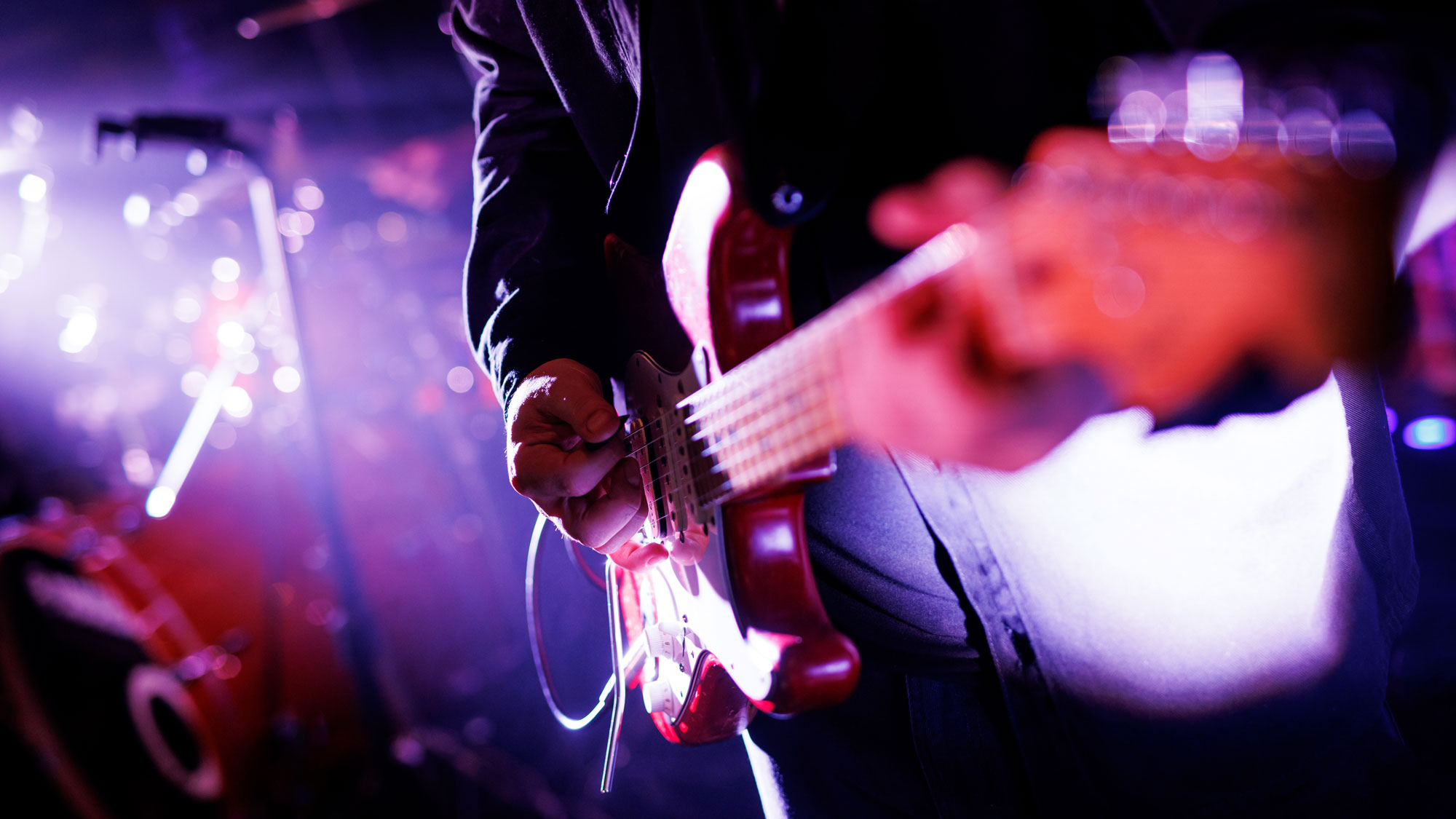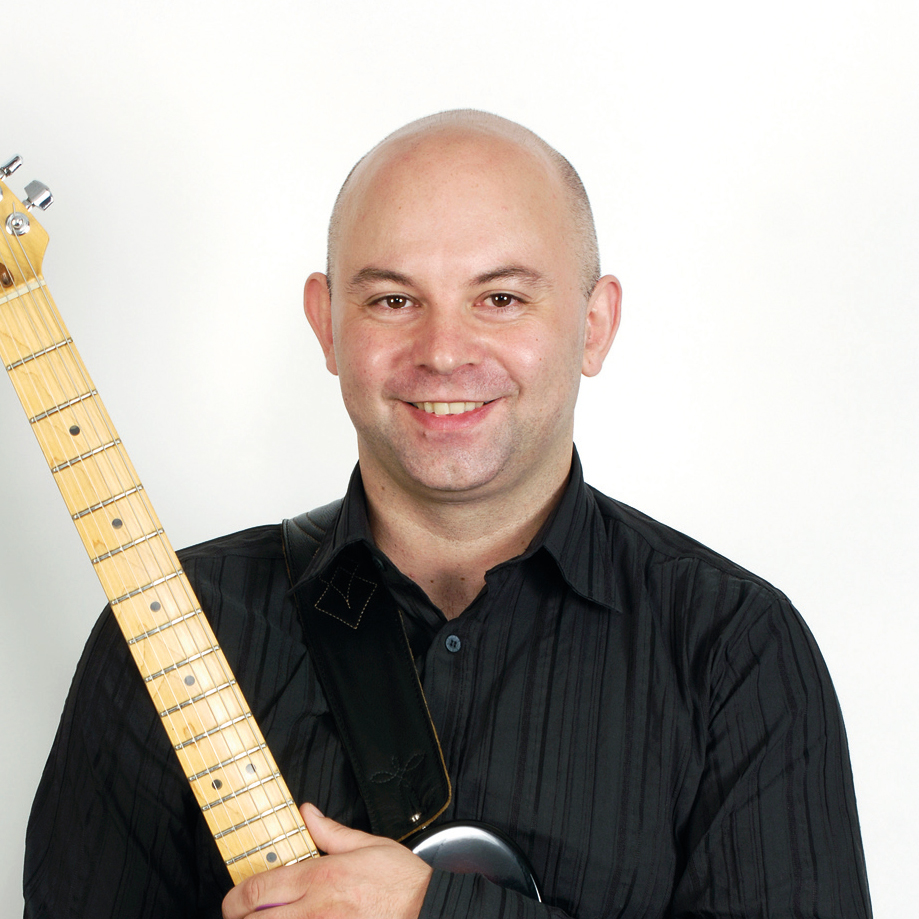“You can grin and bear your rhythmic role, biding your time until you get to the solo, or you can put some thought, effort, and research into this area of your playing”: 5 blues guitar rhythms every guitarist needs to know
Every guitarist can improve their rhythm game. As Steve Lukather says, “I’ve been paid to play rhythm guitar 90% of the time. It’s harder than it looks”

It’s fair to say that we guitarists like to take solos, but while this is undoubtedly a hugely enjoyable and fulfilling pursuit, in actuality this aspect of our playing is really the icing on a much bigger musical cake.
Unless your chosen musical genre is completely lead-centric (such as certain styles of fusion or instrumental rock) then you’ll find yourself in the rhythm guitar chair more often than not. As session great Steve Lukather says, “I’ve been paid to play rhythm guitar 90 percent of the time. It’s harder than it looks.”
You have two choices: grin and bear your rhythmic role, biding your time until we get to the solo, or you can put some thought, effort, and research into this area of your playing, approaching this accompaniment component with flair, creativity, musicality and inventiveness. Needless to say, all of the best (and busiest) guitarists fall into this latter category. The secret really here is in achieving that balance.
It’s definitely a case of getting out what you put in, and with just a little effort you can have equally as much musical significance, impact and possibly most importantly, fun, while grooving away behind a soloist or singer, and really contributing to the musical effectiveness of the group in the process.
Presumably you fell in love with music before you fell in love with the guitar? By seeing the rhythm role as a crucial part of the bigger musical picture you may even remind yourself why you were inspired to want to play music in the first place.
To be a good rhythm player, you also need to be a good team player. Familiarise yourself with the roles of each instrument in the ‘rhythm section’ – usually the drums, bass, second guitar or keyboard player – and be aware of their respective parts for every piece that you play.
It’s unimportant what style you prefer; the main difference between performing in a small band, say a rock power trio, to performing in much larger ensemble, such an orchestra, is that each member in the smaller group is usually responsible for creating their own part. Stylistic authenticity, inventiveness, flair and the ability to respond to your surroundings are all essential parts of the rhythm king’s arsenal.
All the latest guitar news, interviews, lessons, reviews, deals and more, direct to your inbox!
There are five short studies in this lesson, each with an introductory exercise and accompanying musical example covering a wide variety of styles. But they’re all fairly blues guitar influenced; syncopated rock-blues riffs, 12/8 gospel, swing-shuffle, country-rock and walking bass.
Treat each example as the beginning of your studies. Take each concept or rhythmic approach and experiment with rearranging the ideas through as range of keys or perhaps against a different harmonic sequence. Creating great rhythm parts is a lifelong endeavour, and any work put into this crucial area of your playing now, will reap dividends in the future.
Example 1. Eighth-note syncopated rock-blues riffs
We begin with a study using steady eighth notes, and create syncopation by leaving a rest on each downbeat, moving backwards for each subsequent bar from beat four to beat one.
This is followed by a syncopated riff-based study based around a rock-blues in the key of E, juxtaposing single-note lines with punctuated chord voicings. Make sure you don’t rush and be mindful of extraneous open strings when moving between single notes and chords.
Example 2. 12/8 gospel blues
The time signature shifts to 12/8 and we begin with a chordal exercise exploring the voice leading connections between I7, IV, and V7 chords (A7-D7-E7). We can introduce a greater sense of tension and release when A moves to D, and when E moves back to A, by adding the #5 to the first chord in each move (A7#5: A-C#-E#-G to D, E7#5: E-G#-B#-D back to A).
In the following study we see these ideas positioned into a common eight-bar gospel blues sequence in the key of A.
Example 3. Mid-tempo swing shuffle
This example blends sliding fragmentary chord shapes with muted double-stop arpeggios, so we begin with an exercise that outlines both Bb9 and Eb9 in two-note couplets.
The contextualised musical example moves between three-note sliding chord voicings alongside a palm-muted double-stop riff idea coming from these shapes, once again harmonised to follow a conventional 12-bar blues progression in the key of Bb.
Example 4. Straight driving country-rock
This one juxtaposes triads against stationary bass notes to bring out a selection of extensions, tensions and suspensions. Our initial example positions a major triad from the root, 4th and b7th degrees, so for an implied A7 we use A (A-C#-E), D (D-F#-A) and G (G-B-D) respectively.
When we put these notes in order we achieve the A Mixolydian scale (A-B-C#-D-E-F#-G). We repeat the principle for both D7 and E7, before contextualising the ideas in the following 12-bar study.
Example 5. Jazz-style walking bassline
Our final example begins by highlighting the 3rd/7th connections in major and minor II-V-I sequences in the key of Ab major/F minor in two positions. Knowledge of these connections is crucial when we add chordal stabs over a walking bassline, as in our example.
The conundrum is to maintain contrasting rhythmic feels, where the bassline sounds smooth and the chord fragments have more of a staccato (choppy and disconnected) feel and sound.
John is Head of Guitar at BIMM London and a visiting lecturer for the University of West London (London College of Music) and Chester University. He's performed with artists including Billy Cobham (Miles Davis), John Williams, Frank Gambale (Chick Corea) and Carl Verheyen (Supertramp), and toured the world with John Jorgenson and Carl Palmer.



